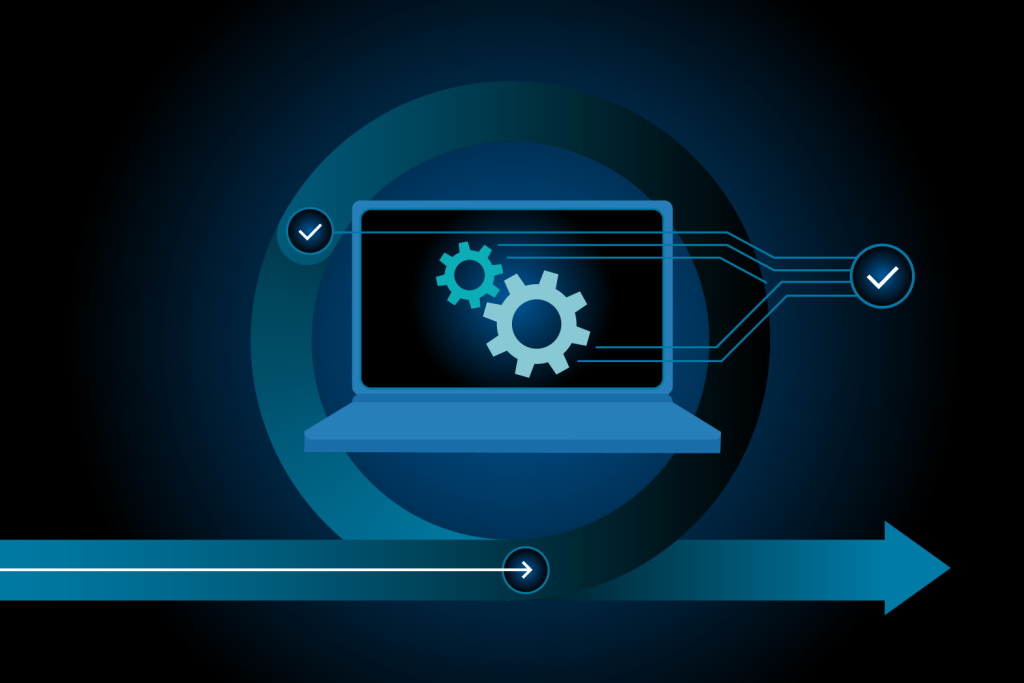
For enterprise resource planning (ERP) to be effective – truly effective – workflows and their associated data need to be captured, integrated and processed so that a company’s processes, costs and revenue can be accurately tracked. If their ERP doesn’t capture all the process workflows, gaps occur.
Enterprise software workflow process gaps are nothing new. They force manual workarounds that lead to duplicate efforts, unnecessary labor, manual data entry and other forms of waste. Research from International Data Corporation, a leading industry analyst firm, shows that companies lose the equivalent of 20% to 30% of their revenue each year because of these inefficiencies. According to a report by the McKinsey Global Institute, employees spend nearly 20% of their time on “searching and gathering information.” This is a productivity killer.
Workflow process gaps aren’t rare; in fact, they are growing in number and magnitude. They stem from seemingly one-off problems, often referred to as edge cases or business corner cases. A business corner case is a problem or situation that occurs outside of planned ERP processes. An electronic workflow process gap then occurs because information about the activities surrounding the corner case cannot be recorded by the ERP – even though it may be stored in a local application, spreadsheet or database. This means that the business does not have central access to all its data and cannot obtain accurate central reports on measures of productivity, time or even revenue. This makes an apples-to-apples comparisons across the business impossible.
ERP Workflow Process Gaps Often Intentionally Ignored
An effective solution is enterprise software transformation through AI augmentation. It can be applied to any enterprise software platform whose data can be accessed directly or through APIs. ERP systems are the most obvious candidates due to their ubiquity and the large number of workflow process gaps they often intentionally ignored. ERP systems do not address most workflow process gaps, by design, because they are developed to meet the needs of the entire business.
Typically, during planning, resources are allocated for 20% of the effort to solve 80% of the issues. Rarely is the full 100% of effort available to implement a solution for every use case in the enterprise. After the system is deployed, time, talent and budgetary limitations usually put corner cases on the back burner, negatively impacting the company’s ability to adapt to future market changes. Additionally, the business continues to evolve much faster than updates to the ERP, continually increasing the number of corner cases and subsequent workflow gaps.
While electronic workflow process gaps are defined as unusual, in that the issues they stem from are rare and difficult to anticipate, they are frequent and result from business changes since the ERP system was planned and installed. They are usually complex and require employees to determine and implement time-consuming workarounds to address them. As a result, departments are bogged down because they need to handle these cases with spreadsheets, side applications, local databases, customizations or even pen and paper. Get a workflow process gap, and not only is there a loss of productivity, but it, by definition will not even be accurately captured by the ERP.
This should be particularly concerning for executives because workflow process gaps are hindering the accurate measurement of productivity and hinder them from determining the real issues causing it. Even worse, non-centralized, often non-reportable data is rattling around in the enterprise – often free of security protocols, good documentation and even knowledge that this information exists by IT departments.
This has a number of possible negative consequences beyond a lack of reporting. These gaps are not easily closed because the enterprise software platforms are inflexible by design.
The Break in Workflow Process Design and ERP
Repairing these issues require two things: a workflow process analysis and a change in the ERP software. A workflow process analysis by itself is not a small undertaking. Most companies undergo some form of analysis before they invest in an enterprise software platform like an ERP. It’s prudent and worth the investment. However, businesses operate in a dynamic environment. Once the ERP is installed, workflow process gaps occur. Unfortunately, the number of workflow process gaps continues to grow every day even if all previously discovered gaps were addressed by the workflow analysis and new ERP platform integration. What were once seen as one-off corner cases producing workflow gaps in enterprise data often transition to become part of “normal” business workflows.
Workflow process gaps can be generated in both negative and positive scenarios. Unanticipated problems can arise from a spectrum of business operations – customer service, manufacturing, asset management, billing, supply chain management, and procurement, among many other areas. They can also arise from business opportunities that stem from entering new markets, customer wins, and business partnerships, to name a few.
ERPs by their very nature are not designed to address new workflow process gaps because they are necessarily rigid. They must meet business rules and security requirements. Addressing workflow process gaps from within an ERP platform can be so time-consuming that by the time an issue is addressed, a dozen more have sprung up.
It also means that data is being lost or under reported. Accurately tracking operating efficiency is being hindered. Employees are spending an outsized amount of time trying to document, or failing to document, their activities when dealing with these workflow process gaps.
Leveraging an AI Augmentation Transformation to Tame ERP Workflow Process Gaps
When done correctly, AI systems that augment new or legacy ERPs, can revitalize ERP assets to effectively address workflow process gaps. Additionally, the AI system can ensure that the new data can be connected to legacy data, documentation is maintained, and all of it follows business and security rules. The power of quickly addressing ERP workflow process gaps rests in delivering a single, flexible interface, with the added ability to store data in such a way that an AI system can combine it with ERP data to create seamless reporting of cost, expense, time and thus productivity. The cost of, and speed of, adding that flexible interface to the ERP is much easier to rationalize compared to individual customizations within the ERP for individual corner cases.
AI systems can be configured and updated to augment legacy ERP implementations that will make it easier for end users to operate, while integrating new data sets with a central data store for reporting – while keeping faithful to all business rules, security rules and the business governance policies of the underlying enterprise software systems.
AI-augmentation of an ERP can allow workflows to be more flexible than with legacy or recently purchased ERP platforms because all workflows must be carefully tested and planned for ahead of time. The AI networks become the user interface and are flexible enough to be quickly reconfigured as needed. AI systems can allow workflows to proceed based on logical business rules which can be easily updated.
Workflow process gaps continue to grow exponentially. If left unchecked, they will hinder the accurate tracking, analysis, reporting and operations of business activities.
Leveraging AI networks as the user interface allows better data collection and management while rapidly adapting and adding new workflows which are promptly tailored to address new corner cases. By leveraging an AI augmentation transformation of their ERP platforms, businesses and organizations can increase operational efficiency, tracking and reporting, while maintaining security.
Ken Fischer
Ken Fischer is the CEO of Atigro, the proven ERP transformation firm that pairs its modular augmentation capabilities with AI-native frameworks. Atigro’s experience and capabilities generate the rapid development and provisioning of new ERP functionality that meets dynamically changing business processes.




